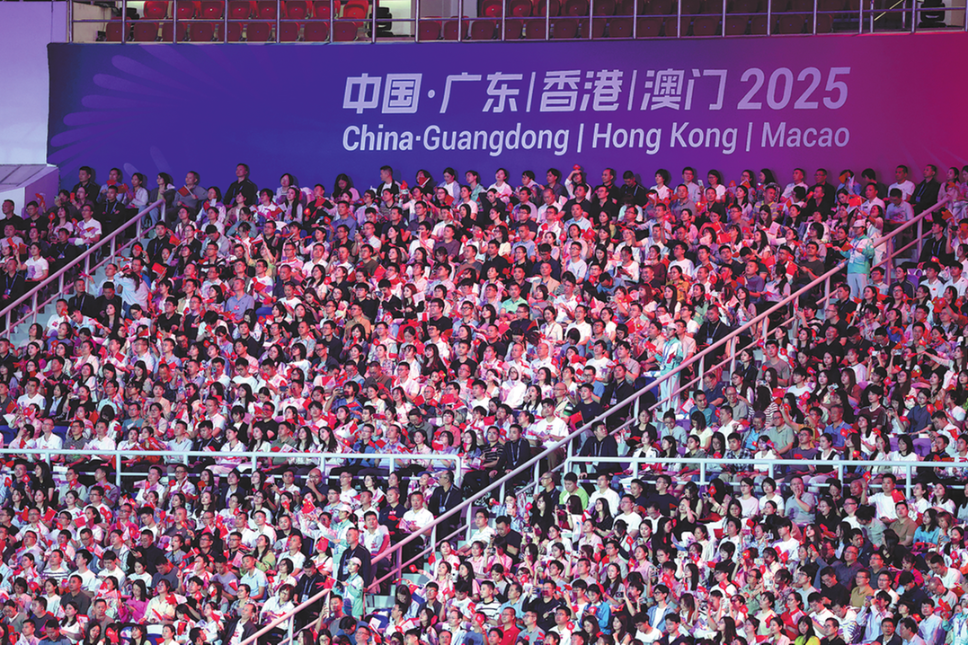Experts: Promotion of RMB aims to reduce foreign exchange volatility
By CHEN JIA | China Daily | Updated: 2021-11-01 07:40

China's proactive promotion of the RMB's international usage is in line with the economic transformation toward a more open development model, aiming to reduce foreign exchange volatility and contain external shocks, according to officials and experts.
The evolution of the country's economic growth model and opening-up is accompanied by its currency's internationalization, which is historically a rare experience for any country, according to Zhou Chengjun, director of the People's Bank of China's Financial Research Institute.
The RMB's internationalization process is also accompanied by the global reallocation of supply and production chains, he said at the 87th International Forum on China Reform on Saturday.
"When the local currency has become a national means of payment, it can effectively reduce the dependence on other major currencies, such as the US dollar, in international investment and trade," Zhou said.
The latest "RMB Tracker" monthly report on RMB progress toward becoming an international currency-put out by the Society for Worldwide Interbank Financial Telecommunication, or SWIFT-showed that by September, the yuan had retained its position as the fifth most active currency for global payments by value, with a 2.19 percent share, compared with 1.95 percent a year earlier. Overall, RMB payments value increased by 6.67 percent compared with August.
Zhang Ping, deputy director of the National Institution for Finance and Development, a financial think tank of the Chinese Academy of Social Sciences, said on Saturday that reforming the money issuance mechanism in China could promote the country's status in the global financial system.
Including treasury bonds in the central bank's balance sheet is an option, which requires better coordination of fiscal and monetary policies. So far, the government's issuance of RMB-denominated treasury bonds as "safe-heaven assets" for foreign investors has not yet been sufficient, and its volume should be expanded, Zhang said.
A PBOC paper issued in April showed that after China's exchange rate reform on August 11, 2015, "the global pricing mechanism of RMB has gradually matured", along with a strengthened linkage between the exchange rates of onshore and offshore RMB. As the Chinese mainland has opened more channels to connect the offshore stock and bond markets, the "two-way "floating mechanism of RMB-denominated assets has improved.
"The internationalization of the RMB has never sought to challenge or replace the US dollar," said Zhou from the PBOC, adding that the world may need more price signals determined by other currencies to achieve the restructuring of global supply chains.
China's move to promote RMB usage aims to form an equilibrium of exchange rate decided by global market transactions. And the premise is allowing more foreign investors to hold RMB-denominated assets, either under the capital account or through the opened RMB financial product trading, Zhou said.
Exchange rate equilibrium is a market result that can reflect participants' expectations, risk aversion and the demand of liquidity. It is also a price signal to optimize the allocation of resources, according to experts.
They suggested that to form the global pricing mechanism of the RMB exchange rate, it is important to develop various exchange rate derivatives, especially to establish an RMB exchange rate futures market at a proper time. It is also important to guide domestic entities to effectively use the offshore futures market to avoid exchange rate risks.
In addition, improving the macro prudential policy system of the RMB exchange rate, as well as strengthening the monitoring of global RMB flows, asset allocation and price changes, are key measures to steadily promote its internationalization, experts said.
























